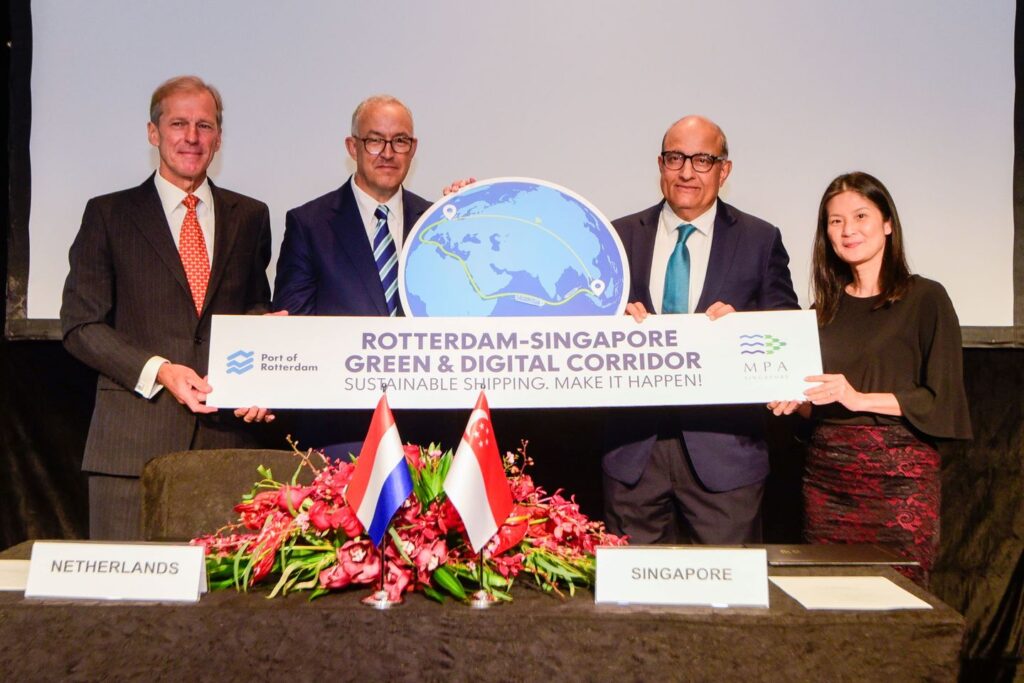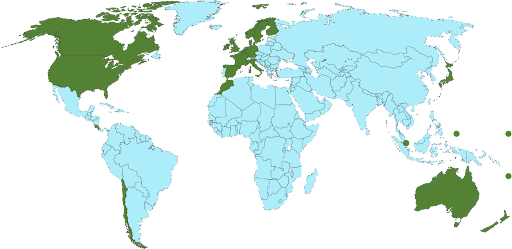Ammonia Green Corridors – The Opportunity Is Now
By Conor Furstenberg StottSofia Furstenberg Stott on September 02, 2022
One year after the arrival of the Clydebank Declaration, partnerships are starting to form to progress the development of Green Corridors. Often fuel-agnostic, these partnerships aim to support an equitable transition into low-carbon fuels. Renewable ammonia holds promise for sustainable zero-carbon shipping, but moving from promise to impact requires action. Green corridors will be critical in this regard.
On November 10th 2021, the signatories1 of the Clydebank Declaration committed to support the development of at least 6 green corridors (zero-emission maritime routes between 2 or more ports) within this decade. Signed and launched during COP26 in Glasgow, the declaration gathers 24 maritime nations, working towards establishment of partnerships, identification and exploration of barriers, developing national plans and supporting the sustainable and equitable development of these corridors. The signatory nations are indicated on the map to the right.
Definitions and approaches

On Aug 25th this year, the Global Maritime Forum released a discussion paper on definitions and approaches for Green Corridors2. It discusses the different proposed definitions of its concept, the leadership and engagement models from governments, ports and industry overall, its evaluation methods and potential governance models. This is a timely piece, which will be helpful in propelling this important development.
The GMF has already published several national opportunity assessments for the maritime energy transition, including for Indonesia, Mexico and South Africa.
Exploring recent announcements
Green corridor initiatives and partnerships have since started to be announced, either being public/private, industry/third party-led or government-led. On January 28th, we saw the C40 announcement on a green corridor partnership between Port of LA and Port of Shanghai. In fact, this was the inspiration for our original green maritime corridors article.

On March 30, a Nordic partnership between Maersk McKinney Møller Center for Zero Carbon Shipping and select ports was announced – the so-called “European Green Corridors Network”3. This initiative also aims to develop a blueprint for maritime green corridors. On August 2nd, the Center was also involved in an MoU between Port of Rotterdam and Maritime Port Authority of Singapore to establish “the world’s longest green and digital corridor”4, together with select industry partners. Beyond the development of alternative fuels, this Rotterdam-Singapore MoU intends “to optimize maritime efficiency, safety, and the transparent flow of goods by creating a digital trade lane where relevant data, electronic documentation and standards are shared”.

On 6th April, a consortium of partners including the Global Maritime Forum, BHP, Rio Tinto, Oldendorff Carriers and Star Bulk Carriers, agreed to assess the development of an iron ore green corridor between Australia and East Asia. As seen in the recent tie-up between Yara Clean Ammonia and the Pilbara Ports Authority in Australia, the potential for ammonia fuel to power iron ore shipping between north-west Australia and Asia is immense.
And, in a joint statement between the Nordic Prime Ministers on 15th of August, the ambition to explore intra-regional green corridors for ferry transport is expressed. The statement has actually led to a newly launched project, led by DNV, to map specific intra-region shipping routes in the Nordics targeted for emission-free shipping.
Without a doubt, it is through these kinds of strategic collaborations that maritime alternative fuels will start to scale. To support and accelerate the sustainable transition towards zero-carbon shipping, maritime ammonia stakeholders could consider connecting any such green corridor partnerships to explore:
- Existing and planned locations for production of low-carbon ammonia
- Existing and planned export and import locations for low-carbon ammonia, and how that can support development of bunkering locations
- Capacity forecasts of low-carbon ammonia production in specific regions
- Development of the carbon intensity certification of produced ammonia and its translation into maritime contracts
The maritime energy transition is happening. Policy makers are naturally focusing efforts in regional contexts, to better manage complexity and recurring chicken-and-egg dilemmas. As the first green corridor pilots are launched, learnings will be captured to drive developments elsewhere. Maritime ammonia stakeholders have an opportunity to get early learnings through green corridor collaborations, to understand where demand will most imminently develop, and how they therefore need to support. That opportunity is now.
Footnotes
1. The signatories to the Clydebank Declaration are Australia, Belgium, Canada, Chile, Costa Rica, Denmark, Fiji, Finland, France, Germany, Ireland, Italy, Japan, Republic of the Marshall Islands, Morocco, Netherlands, New Zealand, Norway, Palau, Singapore, Spain, Sweden, The United Kingdom of Great Britain and Northern Ireland, The United States of America.
2. Global Maritime Forum and the Getting To Zero Coalition have proposed the following definition for a green corridor: “Specific shipping routes where the technological, economic and regulatory feasibility of the operation of zero-emission ships is catalyzed by a combination of public and private actions.”
3. The partnership includes the Port Authorities of Hamburg, Gdynia, Roenne, Rotterdam, and Tallinn.
4. Partners to this collaboration also involve the Global Centre for Maritime Decarbonisation and the Mærsk Mc-Kinney Møller Center for Zero Carbon Shipping as action partners, and industry partners including BP, CMA CGM, Digital Container Shipping Association, Maersk, MSC, Ocean Network Express, PSA International, and Shell.
